
The last time I wrote about bees on my blog, I wrote about the loss of my hives from Colony Collapse Disorder back in October. The loss of both of the colonies of bees caused a great deal of sadness and questioning on my part, but, in the months since, I’ve done a lot of reflection on the bees themselves. I think the long-term lessons from this experience led me to a deeper understanding of the delicacy of a hive, the delicate balance we, as humans, need to strive to protect, and reaffirmed my commitment to beekeeping as a sacred and spiritual practice. And so, its time for another honeybee post! In this post, I will discuss honeybees as healing agents and the benefits bees can have as partners in healing. This post will look primarily at how we can heal people using harvests from the hive, but I’ll do a follow-up post looking at the other kinds of healing that bees do. (FYI, I’m taking a week or more off from my ongoing “Druid’s Primer for Land Healing” series; this is because the next set of posts in that series is taking a bit longer to draft than one week! With my upcoming welcoming of a new colony of bees to the hive, I thought it would be a great post for this week!)
The timing of this post aligns with my first beekeeping work of 2016–this weekend, I’m moving my hives to a much closer location to where I’m renting (a friend’s house about five miles away), cleaning and preparing my hives for new bees. In a very fortuitous set of circumstances, a friend and fellow beekeeper contacted me earlier this week to tell me he’s rescuing two colonies of bees from a building that is being torn down; the weather next week will be nice enough to move them. He’s offered one of the colonies to me, as he knows that I lost my bees last fall. And so, with the preparation work underway, we can explore the magical healing of the bees!
Healing Within and Without
As I mentioned at the start of this post, the last time that I wrote about bees on this blog, I was devastated by the loss of my two hives. The truth is, its really hard to keep bees today with the many chemicals, pesticides, mites, and diseases that the bees face. In talking to a man who had been keeping bees longer than I’ve been alive, he shared with me that his hives in the 1970s and 1980s were 10x stronger than the hives today, that there really is no comparison. And it is during this time that we see an enormous increase in pesticide use, chemicals, the destruction of habitat, and more. And so I think as we consider the role of the bee in healing our own lives, we also have to recognize the importance of cultivating that sacred relationship not just with the bee, but with the land that she lives upon. The truth is, I feel that the bees and their plight are very representative of the challenges facing the entire ecosystem—the bee might be more visibly damaged by pesticides and chemicals, but all aspects of the land suffer–including the humans that inhabit the land.

So part of the reason that I am sharing this material today, is that this kind of knowledge can help us cultivate a better relationship with our land. As we use harvests from the hive to heal our bodies, we can also think about other ecosystem healing work that there is to do and that my recent series of posts have described in depth.
And of course, there are important connections between our inner and outer worlds. By working with the bees to produce healing medicine for humans, we create a powerful connection to the land, and encourage many humans to work to heal it as well. Its a cycle that’s important to recognize, and promote–the mutual healing and benefit of humans, the land, and all of the land’s inhabitants. This is why permaculture’s ethical system is as much about people care as it is about earth care–because the two are fuzed together, and healing one helps heal the other for the mutual greater healing of both.
Healing from the Hive: An Herbalist’s Perspective
Herbalism is the traditional use of plants for healing—and one of the ways we can use plants in a concentrated manner is using transformed plant material from domesticated honeybees. As master alchemists, honeybees transform plant matter–primarily plant resins and plant nectars–into incredible healing agents. There are four things that we can harvest from their hives, all of which are extremely useful in herbalism practice (and can be used in place of other herbs that are endangered, like Goldenseal). The material I’m presenting here comes from four places–a book called The Honey Prescription, material from Jim McDonald’s Four Season Herbal Intensive, and material from older herbal books, as well as my own direct experiences.
- Honey: Honey is created from nectar from flowers. Bees convert the nectar into flowers by removing the water and curing the honey until it reaches below 20% water content. At 20% water content, it preserves indefinitely.
- Propolis: Concentrated plant resin from flowers, trees, etc. Bees use it as a “glue” in their hive, but we can tincture it and use it as medicine (note that propolis must be tinctured in 95% alcohol because it is not water-soluble. Whatever you tincture it in will forever have propolis on it!)
- Beeswax: Bees can eat their honey and excrete wax from special wax glands on their abdomens. This, of course, we can use in many medicinal preparations (such as a salve).
- Pollen: Pollen is also collected by bees from flowers. Bees keep it and use it as their protein source. Pollen use for humans is currently a bit controversial, with a lot of claims but not necessarily any science to back it up. I haven’t used this at all, although it does seem to be one of those new fads.
This post will explore the first three: honey, beeswax, and propolis, and the healing that they bring.
Honey as a Healing Agent
Honey has been used as a healing agent for millennia. However, its important to understand that many modern kinds of honey that you buy at the store do not have these healing properties. This is because nearly everything that is good about honey as a healing agent is only good when it is raw. Exposing honey to heat above 100 degrees or too much light means its not nearly as effective (especially in its anti-bacterial action). Note that most beekeepers, especially larger-scale beekeepers, use heat to process honey because it flows better. Given this, only honey labeled as raw honey have the medicinal actions described here.
Honey as a Healing Food
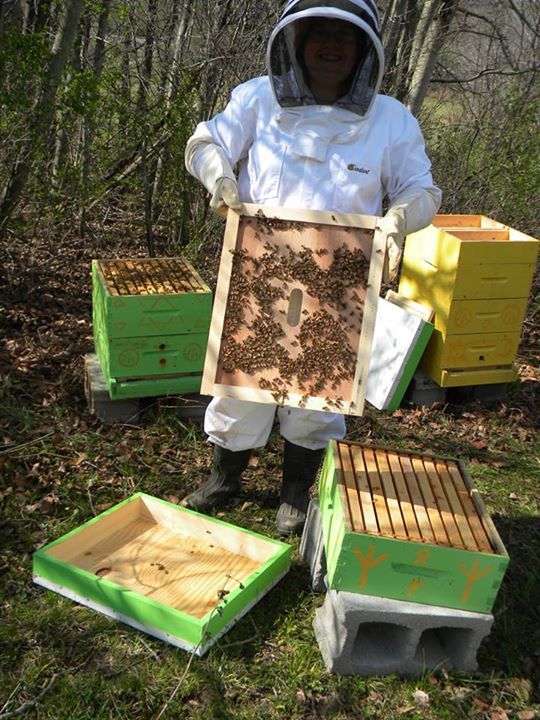
Honey is an incredible healing food. The best honey is raw honey, unfiltered, from a local beekeeper. A few other tips on honey:
- Darker honey have higher amounts of minerals compared to lighter varieties
- Honey is more nutrient-rich than sugar or corn syrup; trace amounts of many nutrients (thiamin, riboflavin, nacin, calcium, copper, magnesium, iron, manganese, zinc)
- Honey has prebiotic and probiotic properties to facilitate good digestion
- Honey contains flavonoids and phenolic acids which act as antioxidants
- Honey can aid with calcium absorption, which helps with osteoporosis, etc.
I eat honey almost every day and try to have it in various ways. You can cook with it, but if you do, be aware that heat zaps some of its medicinal power. Given this, when I cook with it or add it to tea, I do it as the last step after the tea has cooled or the food is baked and I can just drizzle some honey on it!
Honey as Medicine: Wound and Ulcer Healing
Honey is an extremely potent and powerful medicine–I have used it firsthand in a number of ways, and it is regarded highly by herbalists in their practices. These are some of its amazing benefits:
- Anti-bacterial activity: All honey that have not been exposed to light or heat are anti-bacterial and sterile. Darker honey have a stronger anti-bacterial activity; Anti-bacterial action (the anti-bacterial activity is caused by minute amounts of hydrogen peroxide).
- Kinds of wounds: Honey can be used extremely effectively in wounds, including festering wounds, foot ulcers, large septic wounds, etc. (it kills the infecting bacteria in the wound). It is extremely effective on open wounds, even deep cuts (skin gashes, ulcers, gaping wounds)
- Honey also sucks up excess water in a wound; because of this it needs to be reapplied fairly often on serious wounds
- Honey draws out foreign matter and removes dead tissue
- Honey reduces wound scarring and encourages new growth
- Honey reduces inflammation
- Honey also deodorizes an infected wound (it kills the anaerobic bacteria which cause infections)
- Can kill “superbugs” like MRSA, Anthrax, TB, Septicemia (see Honey Prescription, Pg 73 for more info)
To use honey in the above ways, you can directly apply it to wounds using sterile bandages with honey, under a band-aid, etc. Depending on the nature of the wound or burn, it might require many applications of honey per day.
Honey as Medicine: Many other Healing Benefits

The following are some more ways we can use honey in a medicinal preparation:
- Honey is extremely effective on burns, especially on serious (2nd and 3rd degree) burns. I have found that you can apply honey to a burn even before heading to the hospital in the case of serious burns. Honey will reduce inflammation and create a moist healing environment, stimulating new skin growth. So many times I have used honey to heal burns!
- Sore/Scratchy Throat + Cough: use for alleviating nocturnal coughs and upper respiratory infections (functions as a demulcent on the throat)
- Intestinal Disorders: Gastritis can be helped by honey. It even helps soothe salmonella (I have firsthand experience on this issue, unfortunately)!
- Hemorrhoids: Honey significantly reduces the symptoms (use a mix of beeswax, honey, and olive oil to create a salve)
- Tooth Decay: Honey stops the growth of bacteria found in dental plaque and reduces the amount of acid reduced (can promote health if used in place of refined sugar)
- Gingivitis: Use directly on the gums to reduce symptoms and promote healing.
- Enhancing Immune Systems: Boost immune system and white blood cell effectiveness
Propolis
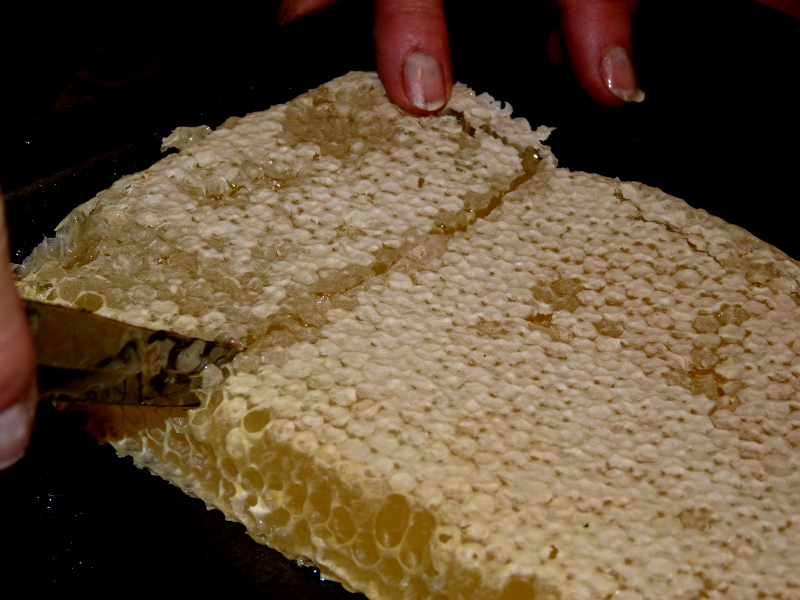
Propolis is the concentrated plant resins that the bees collect. They use it as a “glue” in their hives–its very sticky at first, and then slowly dries out and becomes brittle. It smells amazing, like the inside of the beehive on a warm summer day! Propolis can be used similar to how goldenseal is used in many cases, and since goldenseal is so endangered and rare, its a wonderful alternative. Its primary function is that it is a contact anti-microbial, meaning it has anti-microbial action when coming in direct contact with the tissues. Due to its resinous nature, it also seals up wounds effectively! Here are some more details:
- Anti-microbial action. Propolis is very effective as a remedy for cold sores and herpes virus manifesting on the face or other parts not to be named. It has very strong contact anti-microbial properties and can function as a “seal” over wounds and sores.
- Burn Healing: Can help heal (and seal up) minor burns.
- Dental Cavities: Propolis can effectively be used as a mouth disinfectant, especially to limit bacterial plaque.
- Wart Removal: Propolis can heal plantars and common warts with the repeated application (one study suggested a 75% success rate
It’s really an incredible addition to the herbal medicine chest! I would suggest reading The Honey Prescription for more information on this amazing healing agent!
Beeswax
I’m not going to write too much about beeswax here, as it deserves a longer treatment on its own, but it is widely used in herbal applications. It’s especially useful for making salves and creams (like my backyard healing salve or jewelweed salve). It’s also wonderful for making candles, and shining a light in dark places. One of the family traditions my family has done our whole lives is making Ukrainian eggs (called Pysanka) where you use beeswax to mask certain colors of the egg as it goes through successive dye baths to create beautiful and colorful patterns. These eggs could be used for protection, fertility, and more–and the beeswax is a key part of that process.
Herb Infused Honey
You can combine the healing properties of honey with the healing properties of other herbs for added effect. My elderberry-infused honey is a daily addition to my tea in the winter months!
Herbs you can use include: Cinnamon (sticks); vanilla beans; sage, lavender, rosemary, thyme, lemon verbena, lemon balm, elderflower, rose petal, chamomile, star anise, dried lemon slices or dried lemon zest, dried ginger, mint, bee balm, and more. For this recipe, use 2-3 teaspoons of dried herbs per 1 cup of honey.
You will also need a mason jar, some raw honey, and a spoon or stick for stirring.
Here are the directions for your infused honey:
- Ensure your herbs are chopped up. The more chopped the herb is, the better it infuses, but the harder it is to get out.
- Add wax paper to the top so the honey doesn’t touch the lid (there is BPA in the lid). Or use a plastic lid.
- Infuse at least 1 week, turning the jar every day. Don’t set it on a warm windowsill in direct sunlight (unlike some online instructions suggest), as this will remove some of the honey’s antimicrobial actions.
- IF you want, you can strain the honey, and store it in a cool, dry place. (Alternatively, don’t strain it and enjoy it with the dried herbs inside–that’s what I do with my elderberry honey!)
- If you do strain it, you can use the leftover herbs in a tea.
*Note, you can use fresh herbs for this as well. Seep them for about 2-3 weeks. Keep your infused honey in the fridge and use it within 2-3 weeks. Fresh herbs add water content to the honey, which makes it no longer shelf-stable. A wonderful thing to do, however, is to add the herbs, then just take a spoonful of the mixture and make it into tea! It won’t last long!
**Safety note: Honey is safe for infusing because it is very acidic (Botulism grows in a low acid, low oxygen environment; honey is not a low acid environment)
I hope you’ve enjoyed this small dip into the healing magic of the beehives–speaking of which, I have some beehives calling to me, so I best get to the work at hand!
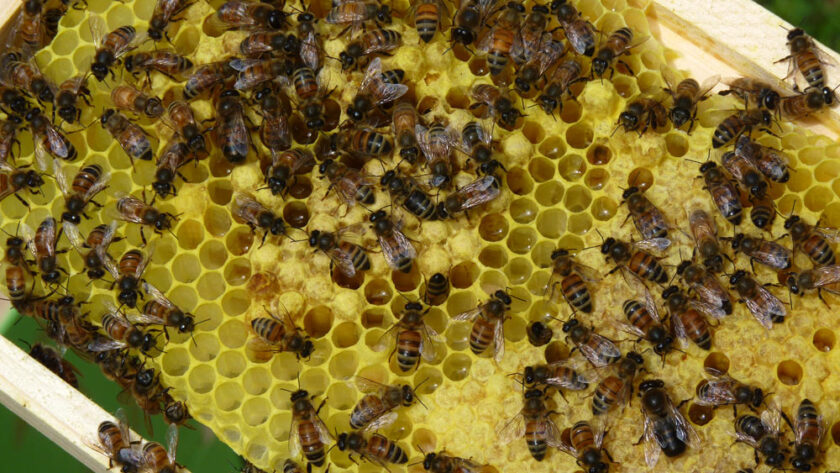
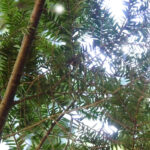
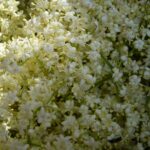

Dana, I know you were distressed when you lost your bees. I have spent several years healing my property and adding thousands of wildflower seeds. I would love to have honeybees. With no experience, I would hate to lose them. I hoped to keep them on my property for safety against poisons, but they are free creatures. I haven’t built a hive yet… and saw my first butterfly yesterday. l worry about all the poisons for us the bees the planet.
It is very distressing to lose the bees–but I think the best we can do is work to heal this planet! But I wouldn’t let that stop you–its a wonderful experience to work with the hives. They fly where they will fly, of course, but we can do what we can to keep them safe. It doesn’t always work, of course, but we do our best.
Thank you Dana. I have 2 beehives and really love having the bees around in my garden. My question is how you use the propolis tincture? Dose? Thanks so much, Linda
The propolis tincture is great. It kind of coats things, so you only need a few drops on whatever area you need it for–and I add it as needed :).
So glad I found your blog. I am starting my lip balms up again and after 2 years I thought I woukdnt google up on some stuff and what’s with all this talk about propolis allergies? Should I consider trying out candelilla wax? I used to use yellow beeswax pellets from mountain rose herbs and I love the beeswax for all its properties but I dont want to cause a weird rash. How is this talk popping up on google now but I had never heard of such an allergy until today and im pretty OCD about my lip balms. I want them 100% organic. So two questions:
And a comment: ive been unsuccessful in trying to find a local beekeeper to sell me their wax. Making sure the bees are treated well would be great.
1. Is there such a thing as was without the propolis?
2. Is beeswax organic? If its bit been refined or bleached or whatever, I would say it is, woukdnt you?
3. I know. Another question. I might just keep using beeswax. I dont WANT to switch waxes 😰 is there a humane, high quality beeswax provider you can recommend?
Hello and thanks for the comment! Propolis is plant resin, and generally, it is filtered out during the beeswax rendering process (In fact, I’m preparing a nice post on rendering beeswax in the next few weeks–once it is posted, you’ll see why you can’t have beeswax production without propolis, but good filtering would prevent it). Different propolis is created by the bees during different times of year and location. One of the issues with it is that the bees can actually make propolis out of road tar, and that’s really, really bad for people (and my guess is that that’s somewhere where the allergies are coming from). Many people seek natural beeswax lip balms, and I’m wondering if that’s the best route to go.
Wax, propolis, honey and pollen all show up in the same beehive, so there is no wax without it.
Some beeswaxes are organic and some are not. Organic certification is notorously difficult to get because everything within 2 miles of your hives has to also be organic. Its not realistic for most beekeepers. But you can ask about if they use plastic foundation (which is a problem) and ask if they use chemicals in their hive (an even bigger problem) and that will allow you to get a sense of how their practices are. The organic label is useful, but not always accurate, I have found.
I think that each wax has a downside – the Candeillia wax is really really hard. Soy based waxes work for anyone but those with a soy allergy.
In terms of providers, I would seek regionally for apiaries (or wholistic apiaries). But look for folks in your state or the next state over. Have you tried larger regional farmer’s markets? That’s where I found people before I was keeping bees :).
You’re the best!!! How informed you are. Thank you muchly! I haven’t tried too hard to look local, aside from calling a couple farms with no reply. 😳 but now that I have some beehive practice questions to ask, I feel a bit more secure in my attempt to secure the best for my balms. Thank you again. I’ll be sure to read your next post!!
The farmer’s market is the best bet. One of the other weird things large commerical beekeepers do you want to watch out for is that some starve their bees. A typical hive (langstroth) takes about 100 lbs of honey to make it through the winter. That’s 100 lbs they could harvest for profit. They overharvest, the bees die, and then they purchase a new colony from Georgia (for about $90, way less than what they could get for the honey). Now, bees already don’t have a good survival rate in the winter (some winters we have up to 50-80% hive loss, even if they are well insulated and with 100+ lbs of honey); but we need to give them the best shot we can. I hope this is helpful! 🙂